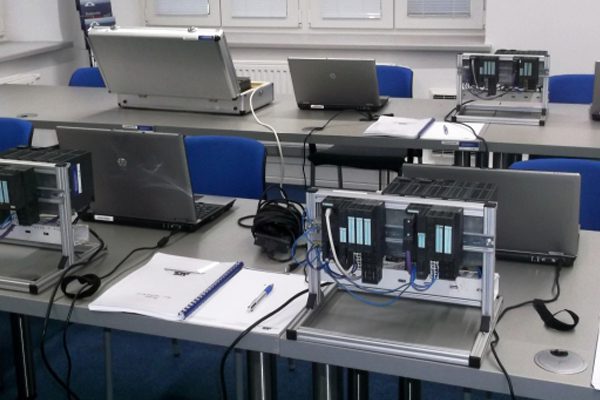
Target Group
This course is designed for maintenance personnel who have to maintaine and solve problems on the Allen-Bradley MicroLogix, SLC-500 and PLC-5 platforms. This course uses the Rockwell Software products RSLogix 5, RSLogix 500* and RSLinx.
(Pre) Knowledge
To join this course a basic knowledge of Windows and Allen-Bradley PLC possibilities is required.
Global Contents
Maintenance personnel are often confronted with equipment from several manufacturers. This course recognises that maintenance personnel cannot build up a profound technical knowledge of all the equipment to be maintained. One needs to have sufficient knowledge of the equipment, coupled with knowledge of the installation to be able to diagnose the problem and then solve the problem.
With regard to PLC’s and programming software, the maintenance engineer needs to be able to access specific parts of the program and to examine the I/O status. Programming and documenting the program is of less importance. The maintenance engineers should be capable of making small changes to the program.
Problems are most likely to occur with the installation itself and this is reflected in the PLC by for instance a defective sensor, a badly working cylinder etc. These faults can be investigated via the programming software and the signal status can be presented dynamically. This is necessary, because designers are not always able to design their programs to register every possible fault and the potential cause.
The maintenance engineer should therefore be capable of executing the following actions:
- To be able to identify if the PLC is still active and that there are no communication errors with the I/O or other coupled PLC’s.
- To determine that the signal of the ‘suspected’ unit will show at the correct PLC input / output. To install and to start the programming software.
- To make the internal I/O status of the signal visible:
to call the ‘suspected’ section in the program;
to make timer and counter files visible. - The maintenance engineer must be able to read the documentation, understand the structure of the PLC and be aware of the most commonly used PLC instructions.
- To make links or to develop connections that changes the program conditions. Programming a counter and time measurement is desirable.
- To make a backup of the changes made to the program. The maintenance engineer should also be capable of making an (original) backup of the program and be able to load it into the PLC.
Methods
ATS courses are given by highly qualified trainers, with practical knowledge, in professional ATS training centers or On-Site. Prior to the course an intake conversation can take place to define the participant(s) and the company’s requirements. Presentations (theory and examples) as well as practical exercises bring the courses to life. ATS courses are interactive, the trainer will always make sure the training contents link back to your situation.
Specific Contents
The following lessons will be followed
PLC – Allen-Bradley PLC-5, SLC500 and MicroLogix Maintenance Training Details

Date: Upon request
Location: United States
We also recommend

